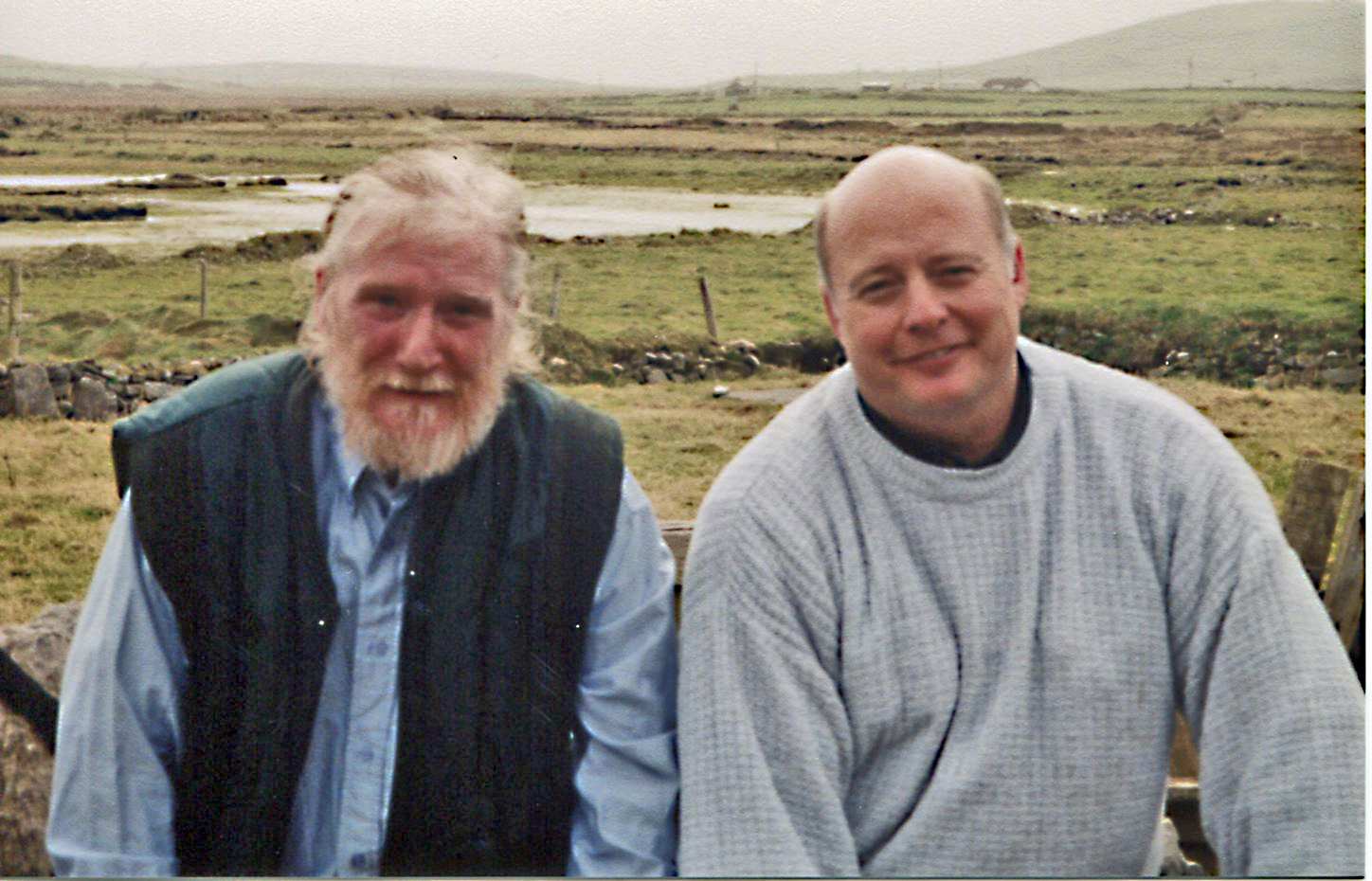The potato patch behind Dermot Healy’s stone cottage wasn’t much bigger than a parking space, but the Irish winter had left it dog-eared and bedraggled.
“The first thing,” Dermot said as he handed me the spade, “is to turn the soil.”
I’d come to Ireland to research a novel. Without a drop of Irish blood in me, I wanted to immerse myself in the rhythms of the language, their stories and the seductive landscape. Then a bookseller in County Leitrim introduced me to one of Ireland’s greatest living novelists, Dermot Healy, who invited me for a weekend at his cottage on the rugged, windblown western coast.
Beneath tousled, uncontrollable white hair and an untidy white beard, Dermot looked to me like an Irish writer should look, which is to say he looks nothing like Joyce, Yeats, Stoker or even Seamus Heaney. He’s been called the “Celtic Hemingway,” mostly for the way he arranges his words on a page, but maybe also for the way he drinks. And Dermot drinks like one might expect an Irish writer to drink, which is to say, an American writer can’t help but try to keep up.
“Hangovers can give you that feeling of an altered reality,” Dermot once told a reporter. “And, maybe life is one big hangover.”
And maybe he’s right. The night before, we’d finished one bottle of Irish whiskey and had begun another when Dermot suddenly seemed to remember something important.
“Tomorrow is St. Patrick’s Day!” he announced with great gusto. “I must plant my potatoes!”
It is a rule of Irish thumbs: One must plant his potatoes by St. Patrick’s Day. An American farmer reckons he must plant his corn when oak leaves are the size of squirrels’ ears. An Irishman just has different crops and different deadlines, that’s all.
“Oh, can I help?” I begged. It was the polite thing for a besotted guest to offer, especially after drinking so much of his host’s whiskey, but in truth, I just wanted to be able to say I had planted potatoes in Ireland on St. Patrick’s Day.
So here we stood the next (hungover) morning, on the edge of the little garden, one spade between us. My first task was to turn the soil, breaking it up and winnowing out the weeds and dead matter that had collected there over the winter. Dermot’s job was to supervise.
The ancient Irish soil was black as night. Lord knows how many poor Irishmen had tilled this exact patch of land over the centuries, but the earth was loose and appeared to be unimaginably fertile. It was moist and rich, and I sunk into it up to my ankles.
Next, I was instructed to dig the drills—the trenches between the hills where the potatoes would be planted. While I carved these deep furrows, Dermot sat on the nearby rock wall, watching my digging and whittling his seed potatoes for planting.
With the drills perfectly aligned, Dermot handled me his dibble and a bucket of potato eyes and showed me how to poke a hole in the hill, drop in the potato seed, and cover it up again. While I got started, he went to the rocky beach to collect seaweed that he would use as a kind of unshredded mulch. A half hour later, he came back with a small bunch of seaweed under his arm, no bigger than a blanket … and carrying a glass of beer. What the …?
“They have beer on the beach?” I asked, but he just smiled.
When we had placed the seaweed over the potato hills, we sat on the rock wall and admired our work … er, my work. My hands, my boots and my pants were black with Irish dirt; Dermot, on the other hand, was spotless.
The moment seemed all too literary … and not because here were two authors sitting on an ancient stone wall in Ireland together.
“Have you ever read the novel ‘Tom Sawyer’ by the American, Mark Twain?” I asked him.
“Oh, yes,” Dermot said. “Brilliant book.”
“Then you know the part about whitewashing the fence?”
Dermot just smiled.
My friend Dermot Healy died at his home on June 29, 2014. He was 66. You can read more about him by simply clicking here.
